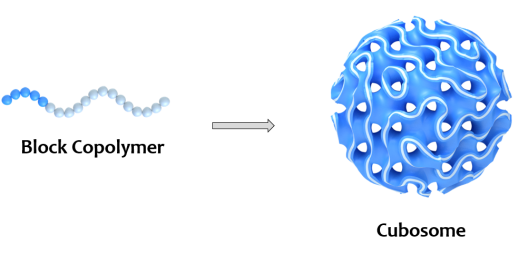Inverse Morphologies

Block copolymer cubosomes and hexosomes are recently discovered types of self-assembled microparticles with very large interfacial area and an open channel system to the surrounding medium. They form for surfactants and block copolymers with a packing parameter, p, larger than 1.
The packing parameter is based on the volume ratio between micelle core and corona, and is a crude estimate to predict surface curvature and the shape of micelles. The most frequently observed shapes are spheres (p < 1/3), cylinders (1/3 < p < 1/2) and vesicles (p = 1). For a special class of liquid-crystalline and unsaturated surfactants, monoolein, a p > 1 led to fascinating inverse morphologies termed cubosomes and hexosomes (depending on the lattice symmetry of the channel system).
The very large interfacial area and the accessible channel system are attractive for filtration, storage/release, and catalysis. We design block copolymer cubosomes and hexosomes that in addition allow to tune pore size, lattice parameter, surface chemistry, and mechanical properties.
